Short Book Reviews
Hanna Kryszewska, Poland
Hanna Kryszewska is a teacher, teacher trainer, trainer of trainers. She is a senior lecturer at the University of Gdańsk, and EU Teacher Training College where she trains pre-service teachers. She is also Director of Studies at SWPS, Sopot, Poland. She is co-author of resource books: Learner Based Teaching, OUP, Towards Teaching, Heinemann, The Standby Book, CUP, Language Activities for Teenagers, CUP and a course book series for secondary schools: ForMat, Macmillan. She is also co-author of a video based teacher training course: Observing English Lessons. Hania is a Pilgrims trainer and editor of HLT Magazine.
E-mail: hania.kryszewska@pilgrims.co.uk
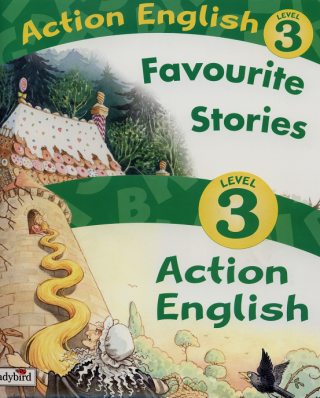
Action English Level 3. V. Lambert. (not specified) Ladybird. ISBN 1-8442-2494-5 pp.48. A pack of attractive materials which contains: a story book with 3 stories (“The Elves and the Shoemaker”, “Rapunzel” and “Hansel and Gretel”), a CD recording of the stories, activity book, board game (“The Lost Forest”), magnets and notes for teachers and parents, which all come in a handy box. It is the third part in a series of 3 sets intended for the young language learners, Level 3 is for kids aged 7-8. The aim of the materials is “to give children a fun” and a “lively introduction to English”. The aim is achieved without doubt. The pictures in the book are pleasant to the eye and the activities in the activity book are varied and fun. The stories are well recorded and the language is reasonably easy, although some teachers might think that the use of past tenses makes the material not suitable for the age and level of the learners. The set contains components similar to those which books for native kids contain, i.e. spin-offs and gadgets. Though a few finger puppets and counters representing characters from the fairy tales would be an asset.
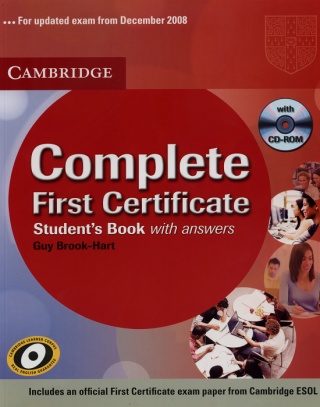
Complete First Certificate – Student’s Book with answers. G. Brook-Hart. (2008) Cambridge University Press. ISBN 978-0-521-69826-9, pp 271; approx. A4. A course for teenagers and young adults preparing for the new revised FCE exam. The student’s book consists of 15 units which introduce and practice language in a communicative way, at the same time covering the various types of exam tasks. The topics cover the areas that need to be introduced in preparation for the exam and there are ample exam tips. The texts are interesting; as I am Polish the text that warms my heart is: ”Learning Polish in Poland”. Other teachers may find their own favourites. The book is accompanied by a CD-ROM (which comes with the CB), a student’s book pack and other typical components. A unique feature of the book is the use of a language corpus in the writing of the book. The corpus consists of candidates’ mistakes frequent in FCE writing papers. The corpus has been compiled by CUP in conjunction with Cambridge ESOL and the frequent mistakes have been addressed by the author of the coursebook. Another unique feature, which also springs from the fact that CUP and Cambridge ESOL are related to Cambridge University, is an official FCE exam paper at the end of the book. In other coursebooks, authors write their own FCE-like exam papers but they are not the real thing. The book, however, may discourage the visual learners and teachers. The pages are a bit sad and when there are some photos, they are uninspiring and very predictable.
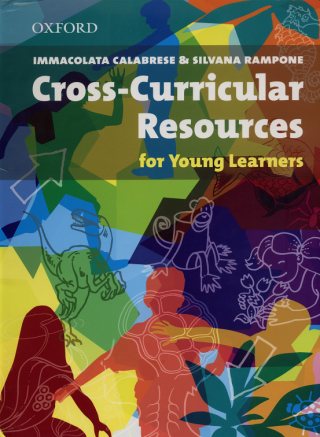
Cross-Curricular Resources. I. Calabrese & S. Rampone. (2007) Oxford University Press. ISBN 978-0-19-442588-9; pp.194. The resource book is a publication teachers of young learners have long waited for. It complements “Teaching Other Subjects Through English” by S. Deller and C. Price ( also OUP, 2007), which is for older learners. The book is a classic CLIL book with topics that are suitable for young learners and cover the natural world, human body, geography and history, here called Growing, All about Me, The world around me and Travelling Time respectively. The material consist of teaching notes and photocopiable worksheets. The treatment of the topics is very original and different from what we may find in other CLIL materials. For example when the students get the task to become aware of the animate and inanimate world, they analyse a painting by Felice Casorati, when they learn about the senses with which we perceive the world, they write a nonsense poem, or when they learn about the human body they make a cut-out cardboard skeleton. If anything, the book contains too much material and the teacher will sometimes have to select. When I used a sample unit with my students, who were training to become teachers of early education and teachers of English as well, they told me that in the session based on the resource book they learned more about CLIL than from any other source. This is the best recommendation. Yet the material is a bit hard to navigate through, as the contents page is in the form of a mind map, and I see no reason why the appendix comes at the beginning of the book.
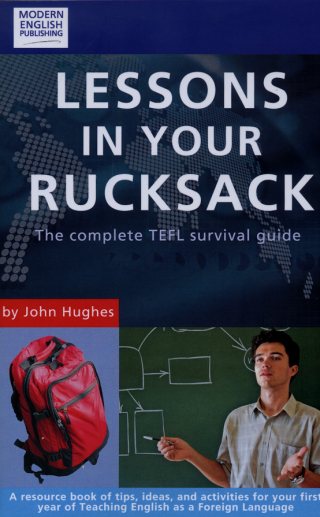
Lessons in Your Rucksack. J. Hughes. (2005) Modern English Publishing. ISBN 1-904549-07-1; pp.188, A5. A book that has been around for a while but worth reviewing in HLT. This resource book contains over 150 classroom ideas, especially suitable for newly qualified teachers e.g. those who have just graduated from a teacher training college or successfully completed their CELTA courses. Other addressees of the book are summer school teachers, support or voluntary teachers, language assistants and gap year travellers who want to earn their living by teaching English as they travel. The latter should start reading the book from page 151 (“Practical matters”). There they will find common ELT acronyms, training courses, addresses of recruitment agencies, summer schools (Pilgrims not mentioned), volunteer programmes, website contacts, bookshops, conferences, addresses of websites with teaching materials and practical advice such as travel agencies, visa requirements, health insurance. Since the book was published some time ago I fear some, if not many, of the websites may not be up to date. But at least the readers will now know what to look for and having been made aware of some areas they can google the information they require. In the main body of the book with practical classroom activities the author covers all the important areas of teaching English: speaking, the four language skills, vocabulary, fun activities and games, lessons from nothing, survival lesson plans, evening activities etc. The size of the book makes it easy to slip into a backpack or handbag, but the print is a bit fuzzy and sometimes looks like printed from a poor quality printer.
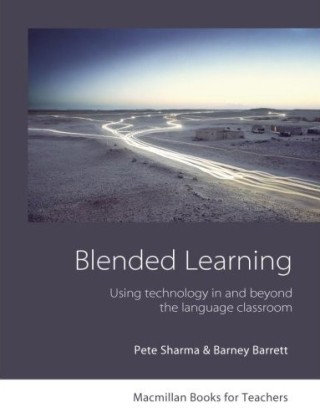
Blended Learning. Using technology in and beyond the classroom. P. Sharma & B. Barrett. (2007) Macmillan. ISBN 978-0-230-02083-2; pp.160. This book will certainly be welcomed by those who are interested in using technology in language teaching, both IT ‘natives” ( the young generation of teachers born into IT) and IT ‘immigrants’ (the older generation of teachers who remember the times when a cassette player was the height of technology in class). The book starts with an introduction to blended learning, what it is and what is good about it. Then the authors cover the following topics: using the web, using electronic dictionaries, whiteboards, portable devices, office software, computer mediated communication and creating your own resources. Each chapter starts with an introduction which presents the topic or the medium and then the authors offer some practical activities. The division is more or less 60/40 of theory and practice, which is good, especially for the teachers less experienced in the use of IT. In my experience IT natives know a lot about IT but often don’t know much about teaching English, IT immigrants know much more about teaching, but don’t feel too confident about IT. The latter also easily get discouraged by people who de-skill them when they want to learn more about IT. So the book helps to by-pass the human factor in learning how to use IT in class. Novices and immigrants will probably focus on different parts of the book, but as a whole the book maps out the territory really well. Having read the book, you can take it from there and experiment on your own. Last not least the people who help us learn the most about using IT in class are our own students whom we tend not to consult or involve enough. The book has a very good index at the end. You might start reading the book by ticking the terms you already know ( it may be an ego boost… or a confirmation that reading the book is a must). The last section “A brief look at the future” is a bit bleak; half science fiction, half stating the obvious.



|